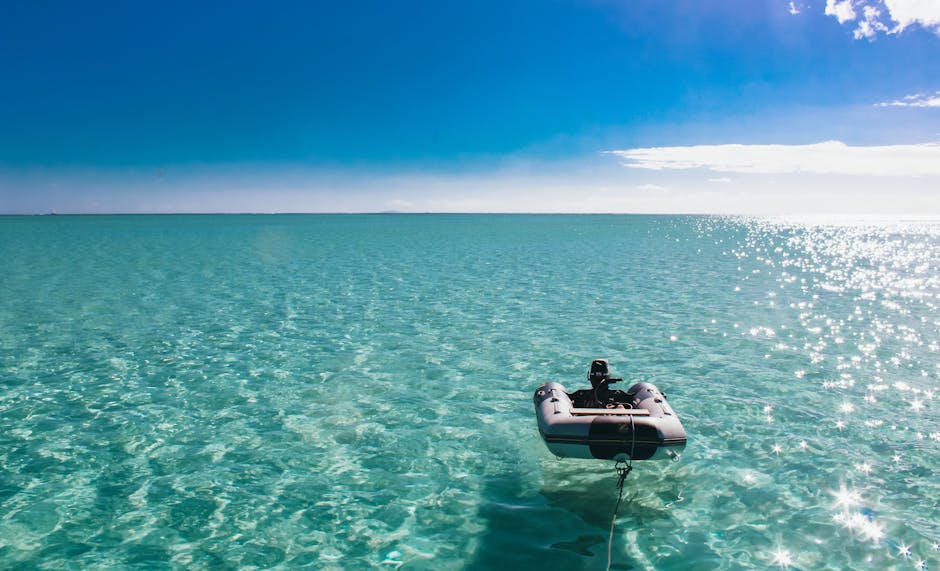Key Takeaways
- Both lagoon and swamp refer to specific types of geopolitical boundary features that influence territorial control and resource management.
- Lagoons typically serve as semi-enclosed coastal bodies of water that form natural barriers, often impacting maritime boundaries and jurisdictional claims.
- Swamps represent wetland areas that can complicate land demarcation and sovereignty due to their fluctuating terrain and ecological characteristics.
- Each feature presents unique challenges and opportunities for border security, environmental regulation, and local governance.
- Understanding the distinctive geographical and political attributes of lagoons and swamps is essential for resolving territorial disputes and managing cross-border cooperation.
What is Lagoon?

A lagoon, in geopolitical terms, is a shallow body of water separated from a larger sea or ocean by a natural barrier such as a sandbar, coral reef, or barrier island. It often forms part of a coastal boundary that affects maritime jurisdiction and resource allocation between adjacent states.
Geographical Formation and Significance
Lagoons develop through geological and oceanographic processes that create enclosed or semi-enclosed water bodies along coastlines. Their formation impacts the delineation of marine borders, especially where territorial waters extend into lagoons shared by neighboring countries.
For example, the Venice Lagoon in Italy influences maritime claims and environmental regulations between local municipalities and the national government. The physical characteristics of lagoons can define exclusive economic zones (EEZs) and influence fishing rights in complex ways.
Because lagoons often harbor unique ecosystems, states involved in boundary agreements must consider ecological protections as part of their geopolitical strategies. The management of these areas can lead to transboundary cooperation or disputes depending on resource exploitation and conservation priorities.
Strategic and Economic Importance
Lagoons frequently serve as natural harbors or ports, making them critical for trade and military strategy in coastal regions. Control over lagoon areas can therefore affect access to shipping lanes and naval operations.
In some regions, lagoons contribute significantly to local economies by supporting fisheries, aquaculture, and tourism industries. Countries bordering such lagoons often negotiate terms to share these economic benefits while maintaining sovereignty.
The economic activities around lagoons demand careful environmental management to prevent conflicts arising from pollution and overfishing. These concerns have led to multilateral agreements in some cases, such as the Baltic Sea lagoons shared by several European nations.
Legal and Political Implications
Lagoons present challenges in applying international maritime law due to their semi-enclosed nature and proximity to land borders. Determining where territorial seas end and international waters begin can become contentious when lagoons are involved.
Disputes over lagoons often require bilateral or multilateral negotiations, utilizing principles from the United Nations Convention on the Law of the Sea (UNCLOS). For instance, the delimitation of lagoon boundaries between countries can influence fishing rights and environmental jurisdiction.
Political stability in regions with important lagoons depends on clear agreements that respect both sovereignty and shared resource management. Ambiguities in lagoon boundaries have historically caused tensions, as seen in parts of Southeast Asia.
Environmental and Social Dimensions
Lagoons are biologically rich environments that support diverse communities, often including indigenous and local populations with traditional rights. This social dimension adds complexity to geopolitical discussions, as human livelihoods must be balanced with state interests.
Environmental degradation in lagoon areas can exacerbate geopolitical tensions by diminishing natural resources and increasing migration pressures. Coastal erosion and climate change also threaten lagoon boundaries, potentially altering political maps over time.
Collaborative environmental monitoring and sustainable development initiatives are increasingly important in lagoon regions to maintain both ecological health and political stability. These efforts often involve cross-border partnerships reflecting shared interests.
What is Swamp?

Swamps, in the context of geopolitical boundaries, are wetland areas characterized by saturated soils and dense vegetation that often span or border multiple administrative regions or countries. They play a significant role in shaping land borders and territorial claims due to their fluctuating and difficult terrain.
Geographical Characteristics and Boundary Challenges
Swamps are typically low-lying regions with seasonal or permanent water saturation, making physical demarcation challenging. Their changing landscapes can obscure traditional boundary markers and complicate land surveying efforts.
For example, the Okavango Delta swamp in Southern Africa influences the border relations of Botswana, Namibia, and Angola, where shifting waters and vegetation create difficulties in exact border delineation. Such environments require sophisticated mapping and political agreements to manage.
Swamps’ hydrological dynamics often lead to natural boundary shifts, which can cause disputes or necessitate boundary adjustments over time. These changes can affect local populations and state security considerations.
Impact on Territorial Sovereignty and Security
Swamps can act as natural buffers or barriers that influence the control and defense of border areas. Their dense vegetation and waterlogged terrain may hinder movement, making them strategic zones for border security planning.
In some conflict zones, swamps have provided refuge for insurgents or complicated military operations, affecting geopolitical stability. Governments bordering swampy regions often invest in specialized infrastructure to monitor and control these areas.
Conversely, swamps can also limit development and access, reducing the likelihood of large-scale settlement and thereby affecting population distribution near borders. This demographic factor influences political representation and resource allocation.
Environmental Considerations and Cross-Border Cooperation
Swamps support unique ecosystems that require preservation, often leading to international conservation efforts where swamps straddle borders. These environmental priorities can foster collaboration between neighboring countries despite other political differences.
For instance, the Pantanal swamp shared by Brazil, Bolivia, and Paraguay is managed through regional environmental initiatives aimed at protecting biodiversity. Such cooperation helps mitigate disputes by focusing on shared ecological interests.
However, resource exploitation such as logging or mining in swamp regions can provoke tensions if not regulated jointly. Balancing economic interests with ecological sustainability remains a key challenge in swamp border areas.
Socioeconomic and Cultural Importance
Swamps often sustain indigenous and rural communities that depend on their unique resources for subsistence. These populations’ land use and cultural practices influence how swamp boundaries are negotiated and respected.
Traditional knowledge of swamp ecology contributes to sustainable management practices, which governments increasingly recognize in border agreements. Protecting these communities’ rights is essential for maintaining social peace in contested swamp regions.
Economic activities such as fishing, harvesting medicinal plants, and small-scale agriculture are common in swamp areas, linking local livelihoods to the geopolitical landscape. This dynamic shapes policy decisions at both national and regional levels.
Comparison Table
The following table compares lagoons and swamps based on various geopolitical and environmental parameters relevant to territorial boundaries and governance.
| Parameter of Comparison | Lagoon | Swamp |
|---|---|---|
| Location Context | Typically coastal, adjacent to seas or oceans | Usually inland or riverine lowlands |
| Boundary Definition Complexity | Complex due to water-land interface and tidal influences | Challenging due to fluctuating water levels and dense vegetation |
| Influence on Maritime Claims | Directly affects territorial waters and exclusive economic zones | Minimal impact on maritime boundaries |
| Ecological Significance | Supports marine and brackish ecosystems with high biodiversity | Hosts freshwater wetlands with unique flora and fauna |
| Role in Security and Defense | Can serve as natural harbors or barriers for coastal defense | Acts as natural obstacle or refuge in land-based security scenarios |
| Human Settlement Patterns | Often near urbanized or developed coastal zones | Sparse settlements, primarily indigenous or rural communities |
| Economic Activities | Fisheries, |